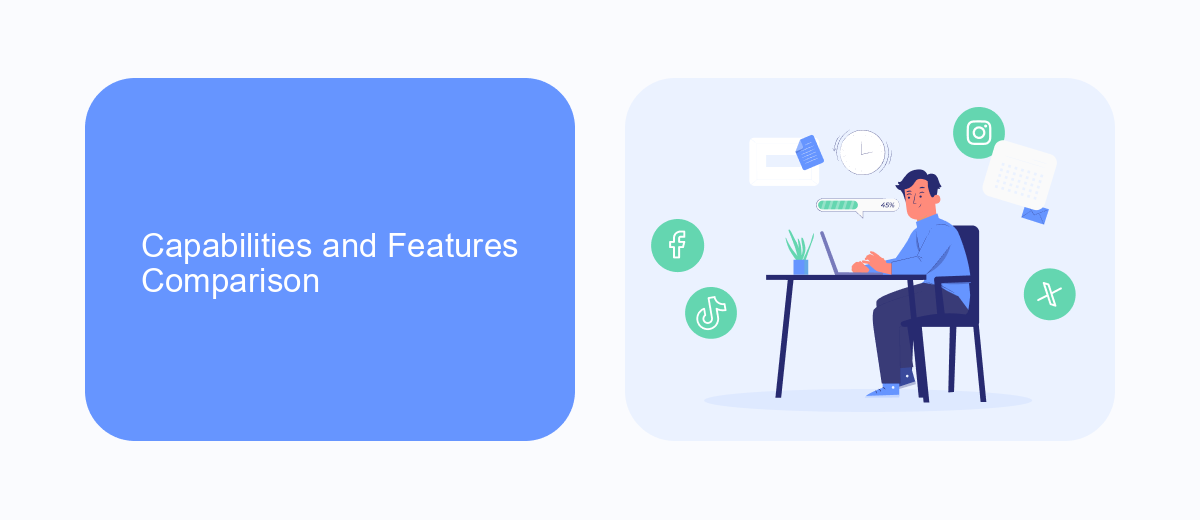In the rapidly evolving landscape of robotic process automation (RPA), UiPath and NICE stand out as two of the leading platforms. Both offer robust solutions designed to streamline business operations, enhance productivity, and reduce costs. This article delves into a comparative analysis of UiPath and NICE, examining their features, strengths, and unique value propositions to help organizations make an informed choice.
Introduction
When it comes to robotic process automation (RPA), UiPath and Nice are two prominent players in the market. Both platforms offer robust solutions for automating repetitive tasks, improving efficiency, and reducing human error. However, choosing the right tool for your organization's needs can be challenging.
- UiPath is known for its user-friendly interface and extensive community support.
- Nice excels in advanced analytics and seamless integration with existing systems.
- Both platforms offer scalable solutions to meet the needs of businesses of all sizes.
In this article, we will compare UiPath and Nice across various parameters to help you make an informed decision. Additionally, we will explore how integration services like SaveMyLeads can further enhance the capabilities of these RPA tools by automating data workflows and improving overall productivity.
Capabilities and Features Comparison

When comparing UiPath and Nice, one of the primary aspects to consider is their capabilities and features. UiPath is renowned for its intuitive drag-and-drop interface, making it accessible for users with varying levels of technical expertise. It offers extensive integration capabilities with popular applications and services, enabling seamless workflow automation. UiPath also provides advanced AI and machine learning features, enhancing its ability to handle complex tasks and improve efficiency.
On the other hand, Nice focuses on delivering robust process automation solutions tailored for specific industries. It excels in customer service automation, offering features like real-time interaction analytics and workforce optimization. Nice's integration capabilities are also noteworthy, allowing businesses to connect with various third-party applications effortlessly. For instance, services like SaveMyLeads can be utilized to streamline lead management processes by automating data transfer between different platforms, enhancing overall productivity and operational efficiency.
Market Share and Customer Success Stories

When it comes to market share, both UiPath and NICE have carved out significant positions within the automation industry. UiPath is known for its expansive reach and large customer base, particularly in sectors like finance, healthcare, and manufacturing. NICE, on the other hand, excels in customer engagement and workforce optimization solutions, making it a preferred choice for contact centers and customer service operations.
- UiPath boasts a diverse portfolio of clients, including Fortune 500 companies, and is recognized for its robust RPA capabilities.
- NICE has a strong presence in the customer service domain, with numerous success stories in improving operational efficiency and customer satisfaction.
- Both platforms offer integration capabilities with various third-party applications, with services like SaveMyLeads enhancing these integrations by automating data transfer and streamlining workflows.
Customer success stories highlight the effectiveness of both platforms. UiPath has helped companies achieve significant cost savings and operational efficiencies through automation. NICE has enabled organizations to enhance customer experience and optimize workforce management. The choice between the two often depends on specific business needs and the desired outcomes.
Pricing and Licensing Models

When comparing UiPath and Nice, understanding their pricing and licensing models is crucial for making an informed decision. Both platforms offer flexible pricing structures that cater to various business needs and sizes.
UiPath provides a subscription-based model with multiple tiers, allowing businesses to choose the plan that best fits their requirements. They offer a free Community Edition for individual developers and small teams, as well as enterprise-level plans with advanced features and support.
- Community Edition: Free for individual developers and small teams
- Enterprise Edition: Custom pricing based on features and support
- Cloud and On-Premises options available
Nice, on the other hand, offers a more customized pricing approach. Their licensing is typically tailored to the specific needs of the organization, often requiring a consultation to determine the most appropriate plan. Both platforms also support integration with third-party services like SaveMyLeads, which can further streamline automation processes and enhance functionality.
Conclusion and Recommendations
In conclusion, both UiPath and Nice offer robust automation solutions tailored to different business needs. UiPath excels in user-friendly interfaces and a vast array of integrations, making it suitable for organizations looking for comprehensive and scalable automation tools. On the other hand, Nice provides specialized features for customer service and financial sectors, offering deep insights and analytics capabilities.
For businesses aiming to streamline their processes and improve efficiency, the choice between UiPath and Nice should be guided by specific operational requirements. Additionally, leveraging services like SaveMyLeads can further enhance integration capabilities, ensuring seamless data flow and automation across various platforms. Ultimately, a careful evaluation of each tool's strengths and alignment with business goals will lead to the most effective automation strategy.
- Automate the work with leads from the Facebook advertising account
- Empower with integrations and instant transfer of leads
- Don't spend money on developers or integrators
- Save time by automating routine tasks
FAQ
What are the main differences between UiPath and Nice?
Which platform is easier to use for beginners?
Can both platforms integrate with other software applications?
How do these platforms handle scalability?
What are the options for implementing and integrating these platforms?
Would you like your employees to receive real-time data on new Facebook leads, and automatically send a welcome email or SMS to users who have responded to your social media ad? All this and more can be implemented using the SaveMyLeads system. Connect the necessary services to your Facebook advertising account and automate data transfer and routine work. Let your employees focus on what really matters, rather than wasting time manually transferring data or sending out template emails.

